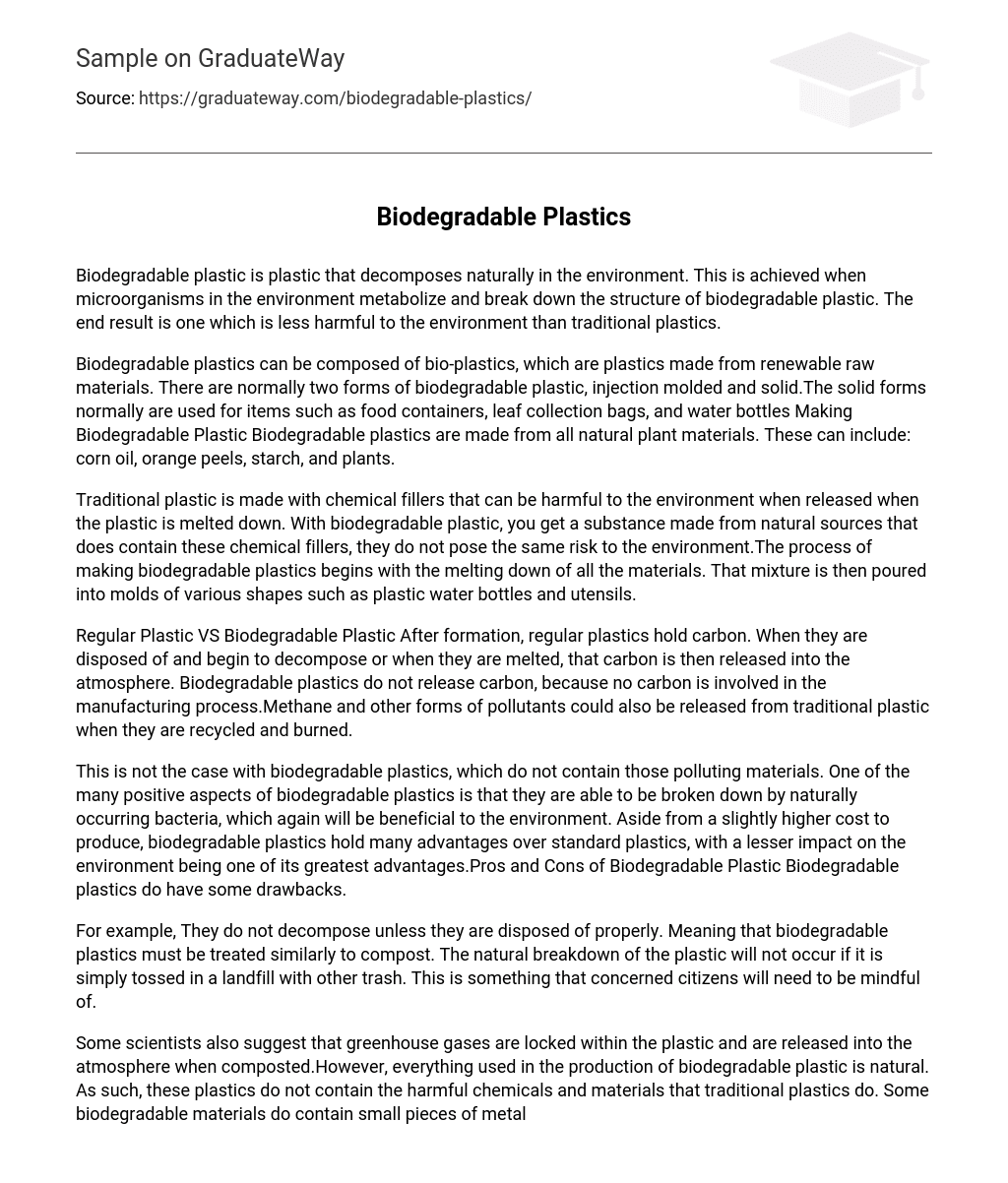Biodegradable plastic is plastic that decomposes naturally in the environment. This is achieved when microorganisms in the environment metabolize and break down the structure of biodegradable plastic. The end result is one which is less harmful to the environment than traditional plastics.
Biodegradable plastics can be composed of bio-plastics, which are plastics made from renewable raw materials. There are normally two forms of biodegradable plastic, injection molded and solid.The solid forms normally are used for items such as food containers, leaf collection bags, and water bottles Making Biodegradable Plastic Biodegradable plastics are made from all natural plant materials. These can include: corn oil, orange peels, starch, and plants.
Traditional plastic is made with chemical fillers that can be harmful to the environment when released when the plastic is melted down. With biodegradable plastic, you get a substance made from natural sources that does contain these chemical fillers, they do not pose the same risk to the environment.The process of making biodegradable plastics begins with the melting down of all the materials. That mixture is then poured into molds of various shapes such as plastic water bottles and utensils.
Regular Plastic VS Biodegradable Plastic After formation, regular plastics hold carbon. When they are disposed of and begin to decompose or when they are melted, that carbon is then released into the atmosphere. Biodegradable plastics do not release carbon, because no carbon is involved in the manufacturing process.Methane and other forms of pollutants could also be released from traditional plastic when they are recycled and burned.
This is not the case with biodegradable plastics, which do not contain those polluting materials. One of the many positive aspects of biodegradable plastics is that they are able to be broken down by naturally occurring bacteria, which again will be beneficial to the environment. Aside from a slightly higher cost to produce, biodegradable plastics hold many advantages over standard plastics, with a lesser impact on the environment being one of its greatest advantages.Pros and Cons of Biodegradable Plastic Biodegradable plastics do have some drawbacks.
For example, They do not decompose unless they are disposed of properly. Meaning that biodegradable plastics must be treated similarly to compost. The natural breakdown of the plastic will not occur if it is simply tossed in a landfill with other trash. This is something that concerned citizens will need to be mindful of.
Some scientists also suggest that greenhouse gases are locked within the plastic and are released into the atmosphere when composted.However, everything used in the production of biodegradable plastic is natural. As such, these plastics do not contain the harmful chemicals and materials that traditional plastics do. Some biodegradable materials do contain small pieces of metal within them.
There is concern that when biodegradable plastics break down, those metals will be released into the environment. However, to date there is no evidence of that causing any significant issues.The benefits would seem to outweigh any potential drawbacks, but the question of whether or not biodegradable plastics will someday replace traditional plastic is still a matter of debate. * Biodegradable Plastics: Information about how biodegradable plastics are made, how they are used, and why they are good for the environment.
PDF * Making Packaging Greener- Biodegradable Plastic: Learn why biodegradable plastic is better for the environment and why you should use it for your packaging needs. Biodegradable Plastics: Are They Better for the Environment: Find out if biodegradable plastics are better for the environment than traditional plastic. * Biodegradable Plastics? Good or Bad? : Learn the pros and cons of biodegradable plastics and whether they are good for the environment. * Biodegradable Plastics: Overview of biodegradable plastics and the environment.
PDF * Biodegradable Polymers and Plastics in Japan: Learn how Japan uses their biodegradable materials, and if it is working for their country.





